 Photo of New Pass/Ravenswood wild horse gather, November 2007
Photo of New Pass/Ravenswood wild horse gather, November 2007Courtesy of BLM WH&B Specialist, Shawna Richardson
In American Herds last article, “Breaking Through Del Rio”, BLM’s Pre-Closeout Report for the New Pass/Ravenswood wild horse gather in November 2007 was referenced due to age class compositions possibly revealing true wild horse reproduction rates.
However, there was something else in that report of equal interest regarding genetic testing and the genetic lineage of the New Pass/Ravenswood wild horses.
Now first off, this is the only Pre-Closeout Report I have seen from BLM regarding such a detailed breakdown of age classes, gender ratios, lactation status of mares and color compositions of the gathered wild horses, so I don’t know if all BLM offices do these close out reports, if it is a relatively new addition to BLM management or if this is just a result of BLM WH&B Specialist Shawna Richardson’s long-time involvement as the specialist for the Battle Mountain Field Office in Nevada. A request is in to BLM for more information on the subject….
The specific issue is that genetic testing was done for the first time on the New Pass/Ravenswood wild horses during the November 2007 removals and it appears there were some interesting issues brewing.
First, if you go back and read the Pre-Closeout Report, you’ll notice that BLM was embroiled in a brouhaha with the Nevada State Brand Inspector. Apparently, some trespass horses with various brands were mixed in with the wild ones. Here is what was said-
Trespass horses
“At trap 3 located on the east side of the HMA, a total of 12 mares and 11 studs were captured with various brands belonging to Ellen Blair, sister of Jimmy Williams, and Ben Williams, Ellen’s son. One un-weanable foal was with one of the branded mares. The presence of these horses had been known for a few years. Several of them were observed during the September 2005 census flight. Subsequent conversations with Special Agent Brian Richards confirmed that the BLM knew of the horses and had been documenting them. Unfortunately, disagreements between the BLM and Nevada State Brand Office resulted in the horses needing to be held at the Holding Corrals until November 15, when they were all shipped to the Fallon Livestock Exchange. Evidently, because the BLM did not have a criminal trespass conviction on the owners, or an order from a Judge for removal from public lands, the Brand Office would not sign the horses over to the BLM for impound. Nevada State took possession of the animals, and planned to give proceeds from the sale to Ellen Blair. Ellen requested that a mare and foal, another mare and a palomino stud be returned to her, which the Brand Inspector granted.” (Pg. 6)
In addition to these trespass horses noted above, a local permittee also told BLM that, “Recently (within the last year), the permittee reports an influx of “light” colored horses such as grey and palomino.”
Now to provide some historical information on the New Pass/Ravenswood herds, BLM describes the “typical” wild horse color composition as primarily solid colors of sorrel, bay, brown and black. Here is what BLM said specifically about the “old” herds.
“During past gathers of this HMA, census flights and field observations, the general description of the wild horses from this HMA have been of primarily solid colored horses including sorrel, bay, brown and black” and, “The conformation of the horses within this herd has historically been average, with most horses reaching 14 – 14.2 hands.”
From this description, it sounds to me like they are a generally small horse typical of the American Mustang with the possibility of strong Spanish Mustang characteristics due to their size and predominate color patterns.
BLM also went on to say-
“The typical colors of the New Pass/Ravenswood HMa include primarily solid colors such as brown, bay black and sorrel. This has been noted within the last two gathers conducted in 1995 and 1999. Since 2005, colorful horses such as pintos and palominos have been identified within the southeast portion of the HMA. Reports from the permittee in spring 2007 indicate the influx of lightly colored horses such as palomino and grey horses.”
So pintos and paints showed up in 2005 and greys and palominos showed up sometime in the last year before the round up. Pardon me if I digress for a moment but I can’t help but reflect on Janet Little’s public statement in the Mustang & Burro Report, Appendix III – (Click Here to view) that said BLM told her the 40 horses they dropped off in the area in the spring of 2008 about a year after the gather were “for color”. (Then of course comes the questions of “influx”? From where, who and why weren’t these also considered trespass horses if BLM suspected they didn’t belong to the known wild horse herds of the area?) However, moving on….
So this is what BLM had to say about these various kinds of herds they captured at the trapsites during the gather and what they chose to do about them.
First, there was these “typical” captured New Pass/Ravenswood wild horses- “During the 2007 gather, approximately 206 wild horses captured from the northern portion of the HMA (traps 1 and 2) were removed and shipped as a result of the acreages that burned in July 2007. These animals were typical of the NPR HMA, and consisted of smaller animals that were bay, brown, buckskin, and black (Refer to data analysis) Many of these animals were also in poor condition. None of these animals were released.”
Let’s repeat that. None of these “typical” NPR wild horses were released back into the management area due to the burned area of the range they were captured near and due to their poor body condition.
Then, this is what BLM said about how they chose to manage these new introductions, a.k.a., trespass and suspected illegal horses recently introduced into the Herd Management Area.
“At this trapsite, (trap 3) 23 branded horses were captured that included a bay paint stud, palomino stud, and sorrel paint mare. It is thought that these branded animals contributed to the colorings of the horses captured from this site, in addition to other unbranded suspected domestic paint horses, but released illegally onto public land. All horses selected for release from this area were released with the rest of the wild horses in the central portion of the HMA. It is assumed that some of these horses will move back to the east portion of the HMA, but also hoped that they will mix with the other horses captured from the rest of the HMA, and influence traits of the future herd.”
“Horses selected for release included some horses with inconsistent markings from the typical NPR horses (refer to data analysis). These horses included pinto colorings, and some grey and palomino horses.”
Apparently, BLM couldn’t release those “typical” NPR horses into a central portion of the HMA like they did with the “new” horses they released, as they hoped to influence future traits with “healthy” paints, pintos, greys and palominos instead.
So after all these minor points above, here are the two main points of this subject that deserve more attention.
The first is, though these “colored horses” were inconsistent with the typical markings of the NPR herd and included influences of known trespass horses or those suspected of being illegally released on public lands, BLM went ahead and released some of these same horses in order to “influence traits of the future herd.”
Why? My guess is because the historical, cultural and unique adaptations of the NPR wild horses take a backseat in priority to BLM being able to adopt them later after future round ups; a management view that is little more than considering the Herd Management Areas as “public lands breeding farms” (thanks, Constance!) versus wildlife management for a uniquely adapted and specialized species in a particular ecological niche.
But the second point is the kicker….
As stated in the beginning, the New Pass/Ravenswood wild horses were finally sampled for genetic testing to determine the herds lineage and genetic characteristics. Here is what BLM said about those chosen for genetic sampling of the New Pass/Ravenswood herds-
“The samples taken were representative of the animals released back to the range.” (pg. 7)
BLM didn’t pull samples that reflected the “old” herds, they pulled samples on the horses they released! That means that when the genetic tests come back, they are going to show a higher percentage of the new breeds BLM allowed to remain “for color” and therefore, they will fail to reflect just what the actual true genetic lineage of the New Pass/Ravenswood wild horses were before all the “influxes”.
Just how much did BLM alter the true genetic composition and historical lineage by their selective sampling of those released? Can’t say as the Pre-Close Out Report only lists “an estimate” of those sampled and released - whatever that means.
Again, the public is only left to wonder how BLM can fail to fully identify and commit to what horses they sampled for the genetic tests of the NPR herds. BLM also made sure we can never find out either as they stated they didn’t mark any of these sampled horses or identify them in any manner for future reference. If you’d like to see BLMs “sampled estimates”, the charts can be found on pages 7-9.
So I suspect that BLM deliberately diluted the genetic lineage of the New Pass/Ravenswood wild horses in order to show a higher percentage of “other breeds” to help cover up possible strong genetic markers of predominately Spanish Mustangs.
Why? If those tests came back showing a high percentage of Spanish mustang lineage as indicated by their relatively small size and historic color patterns, BLM might be more open to public outcry and legal challenges to preserve the NPR herds for their “historical traits”.
By performing the tests on the horses they released, which incorporated the “new” characteristics, now the New Pass/Ravenswood genetic tests will come back showing markers for horses that had been in the area less than a year or in the case of the paints, two years. This also means it will be a lot easier to replace any ole horse with any ole horse than to try and replace an American Spanish Mustang.
So how many wild horse and burro herds has BLM done this too over the years? When BLM pulls out genetic tests in the future, can the public trust those tests accurately reflect the true genetic make up of the historical herds? Is it any wonder BLM can say with confidence, “There’s nothing special about this herd” during proposals to round them up, zero them out or add a few new horses of “similar herd characteristics” to counteract inbreeding and population crashes at the current allowable management levels of so many of our remaining herds.
With little differentiation between a majestic historical icon and a cereal box at the grocery store, have our herds merely become "new and improved"?
However, there was something else in that report of equal interest regarding genetic testing and the genetic lineage of the New Pass/Ravenswood wild horses.
Now first off, this is the only Pre-Closeout Report I have seen from BLM regarding such a detailed breakdown of age classes, gender ratios, lactation status of mares and color compositions of the gathered wild horses, so I don’t know if all BLM offices do these close out reports, if it is a relatively new addition to BLM management or if this is just a result of BLM WH&B Specialist Shawna Richardson’s long-time involvement as the specialist for the Battle Mountain Field Office in Nevada. A request is in to BLM for more information on the subject….
The specific issue is that genetic testing was done for the first time on the New Pass/Ravenswood wild horses during the November 2007 removals and it appears there were some interesting issues brewing.
First, if you go back and read the Pre-Closeout Report, you’ll notice that BLM was embroiled in a brouhaha with the Nevada State Brand Inspector. Apparently, some trespass horses with various brands were mixed in with the wild ones. Here is what was said-
Trespass horses
“At trap 3 located on the east side of the HMA, a total of 12 mares and 11 studs were captured with various brands belonging to Ellen Blair, sister of Jimmy Williams, and Ben Williams, Ellen’s son. One un-weanable foal was with one of the branded mares. The presence of these horses had been known for a few years. Several of them were observed during the September 2005 census flight. Subsequent conversations with Special Agent Brian Richards confirmed that the BLM knew of the horses and had been documenting them. Unfortunately, disagreements between the BLM and Nevada State Brand Office resulted in the horses needing to be held at the Holding Corrals until November 15, when they were all shipped to the Fallon Livestock Exchange. Evidently, because the BLM did not have a criminal trespass conviction on the owners, or an order from a Judge for removal from public lands, the Brand Office would not sign the horses over to the BLM for impound. Nevada State took possession of the animals, and planned to give proceeds from the sale to Ellen Blair. Ellen requested that a mare and foal, another mare and a palomino stud be returned to her, which the Brand Inspector granted.” (Pg. 6)
In addition to these trespass horses noted above, a local permittee also told BLM that, “Recently (within the last year), the permittee reports an influx of “light” colored horses such as grey and palomino.”
Now to provide some historical information on the New Pass/Ravenswood herds, BLM describes the “typical” wild horse color composition as primarily solid colors of sorrel, bay, brown and black. Here is what BLM said specifically about the “old” herds.
“During past gathers of this HMA, census flights and field observations, the general description of the wild horses from this HMA have been of primarily solid colored horses including sorrel, bay, brown and black” and, “The conformation of the horses within this herd has historically been average, with most horses reaching 14 – 14.2 hands.”
From this description, it sounds to me like they are a generally small horse typical of the American Mustang with the possibility of strong Spanish Mustang characteristics due to their size and predominate color patterns.
BLM also went on to say-
“The typical colors of the New Pass/Ravenswood HMa include primarily solid colors such as brown, bay black and sorrel. This has been noted within the last two gathers conducted in 1995 and 1999. Since 2005, colorful horses such as pintos and palominos have been identified within the southeast portion of the HMA. Reports from the permittee in spring 2007 indicate the influx of lightly colored horses such as palomino and grey horses.”
So pintos and paints showed up in 2005 and greys and palominos showed up sometime in the last year before the round up. Pardon me if I digress for a moment but I can’t help but reflect on Janet Little’s public statement in the Mustang & Burro Report, Appendix III – (Click Here to view) that said BLM told her the 40 horses they dropped off in the area in the spring of 2008 about a year after the gather were “for color”. (Then of course comes the questions of “influx”? From where, who and why weren’t these also considered trespass horses if BLM suspected they didn’t belong to the known wild horse herds of the area?) However, moving on….
So this is what BLM had to say about these various kinds of herds they captured at the trapsites during the gather and what they chose to do about them.
First, there was these “typical” captured New Pass/Ravenswood wild horses- “During the 2007 gather, approximately 206 wild horses captured from the northern portion of the HMA (traps 1 and 2) were removed and shipped as a result of the acreages that burned in July 2007. These animals were typical of the NPR HMA, and consisted of smaller animals that were bay, brown, buckskin, and black (Refer to data analysis) Many of these animals were also in poor condition. None of these animals were released.”
Let’s repeat that. None of these “typical” NPR wild horses were released back into the management area due to the burned area of the range they were captured near and due to their poor body condition.
Then, this is what BLM said about how they chose to manage these new introductions, a.k.a., trespass and suspected illegal horses recently introduced into the Herd Management Area.
“At this trapsite, (trap 3) 23 branded horses were captured that included a bay paint stud, palomino stud, and sorrel paint mare. It is thought that these branded animals contributed to the colorings of the horses captured from this site, in addition to other unbranded suspected domestic paint horses, but released illegally onto public land. All horses selected for release from this area were released with the rest of the wild horses in the central portion of the HMA. It is assumed that some of these horses will move back to the east portion of the HMA, but also hoped that they will mix with the other horses captured from the rest of the HMA, and influence traits of the future herd.”
“Horses selected for release included some horses with inconsistent markings from the typical NPR horses (refer to data analysis). These horses included pinto colorings, and some grey and palomino horses.”
Apparently, BLM couldn’t release those “typical” NPR horses into a central portion of the HMA like they did with the “new” horses they released, as they hoped to influence future traits with “healthy” paints, pintos, greys and palominos instead.
So after all these minor points above, here are the two main points of this subject that deserve more attention.
The first is, though these “colored horses” were inconsistent with the typical markings of the NPR herd and included influences of known trespass horses or those suspected of being illegally released on public lands, BLM went ahead and released some of these same horses in order to “influence traits of the future herd.”
Why? My guess is because the historical, cultural and unique adaptations of the NPR wild horses take a backseat in priority to BLM being able to adopt them later after future round ups; a management view that is little more than considering the Herd Management Areas as “public lands breeding farms” (thanks, Constance!) versus wildlife management for a uniquely adapted and specialized species in a particular ecological niche.
But the second point is the kicker….
As stated in the beginning, the New Pass/Ravenswood wild horses were finally sampled for genetic testing to determine the herds lineage and genetic characteristics. Here is what BLM said about those chosen for genetic sampling of the New Pass/Ravenswood herds-
“The samples taken were representative of the animals released back to the range.” (pg. 7)
BLM didn’t pull samples that reflected the “old” herds, they pulled samples on the horses they released! That means that when the genetic tests come back, they are going to show a higher percentage of the new breeds BLM allowed to remain “for color” and therefore, they will fail to reflect just what the actual true genetic lineage of the New Pass/Ravenswood wild horses were before all the “influxes”.
Just how much did BLM alter the true genetic composition and historical lineage by their selective sampling of those released? Can’t say as the Pre-Close Out Report only lists “an estimate” of those sampled and released - whatever that means.
Again, the public is only left to wonder how BLM can fail to fully identify and commit to what horses they sampled for the genetic tests of the NPR herds. BLM also made sure we can never find out either as they stated they didn’t mark any of these sampled horses or identify them in any manner for future reference. If you’d like to see BLMs “sampled estimates”, the charts can be found on pages 7-9.
So I suspect that BLM deliberately diluted the genetic lineage of the New Pass/Ravenswood wild horses in order to show a higher percentage of “other breeds” to help cover up possible strong genetic markers of predominately Spanish Mustangs.
Why? If those tests came back showing a high percentage of Spanish mustang lineage as indicated by their relatively small size and historic color patterns, BLM might be more open to public outcry and legal challenges to preserve the NPR herds for their “historical traits”.
By performing the tests on the horses they released, which incorporated the “new” characteristics, now the New Pass/Ravenswood genetic tests will come back showing markers for horses that had been in the area less than a year or in the case of the paints, two years. This also means it will be a lot easier to replace any ole horse with any ole horse than to try and replace an American Spanish Mustang.
So how many wild horse and burro herds has BLM done this too over the years? When BLM pulls out genetic tests in the future, can the public trust those tests accurately reflect the true genetic make up of the historical herds? Is it any wonder BLM can say with confidence, “There’s nothing special about this herd” during proposals to round them up, zero them out or add a few new horses of “similar herd characteristics” to counteract inbreeding and population crashes at the current allowable management levels of so many of our remaining herds.
With little differentiation between a majestic historical icon and a cereal box at the grocery store, have our herds merely become "new and improved"?

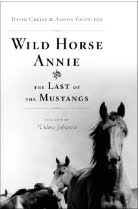



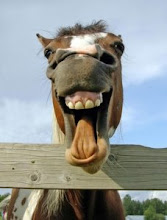




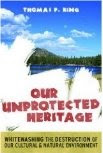



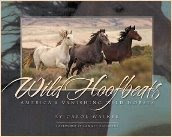




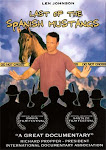





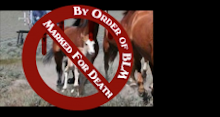
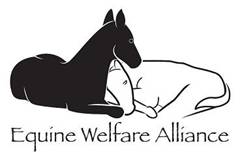
2 comments:
This just makes me so sad and angry that the BLM deliberately is diluting the gene poor of the wild horses just so they can say they are not true Wild Spanish Mustangs so they can be removed. Those ranchers who let their horses go with the wild horses are also too blame. You will never convince me that they did it by accident. We really need to get rid of the BLM before they kill the few true mustangs we have left.
i have one of the babies from this roundup. 13.3, true bay mare. could her DNA be of any help to this matter? if so, please contact me! ranchhand3388@gmail.com
Post a Comment